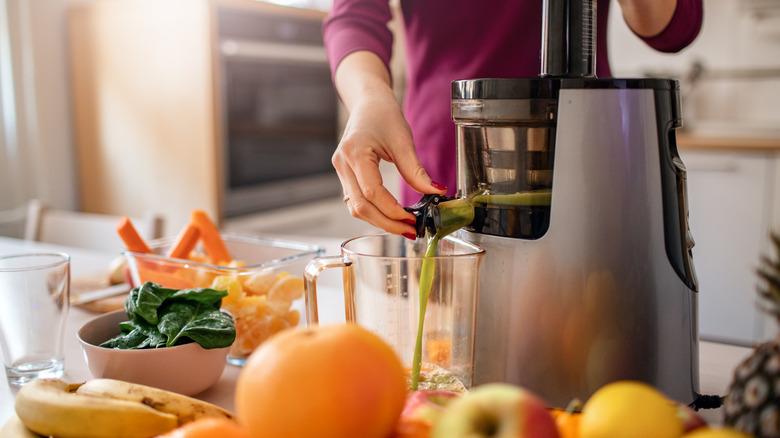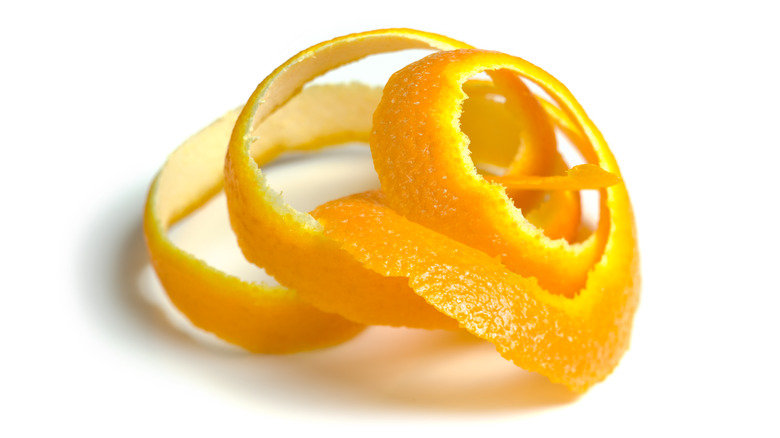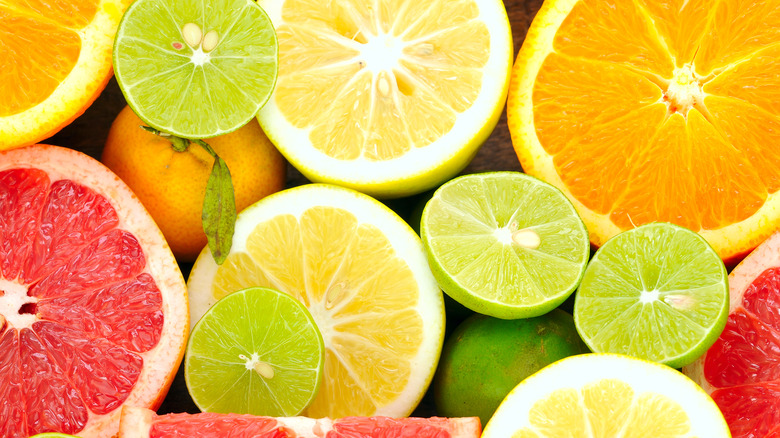You Might Want To Think Twice Before Juicing Citrus With The Rind
If you buy a lot of fresh-pressed juice at juice bars and grocery stores, it's only a matter of time before you invest in a home juice machine. Once you realize how easy it is to turn any kind of fresh fruit or veggie into tasty juice, the sky's the limit on coming up with creative combinations at home. The nice thing about most home juicers is that you don't have to peel most of the produce before you run it through the juicer because the machine will collect all the pulp. That's not the case with citrus, however. The problem isn't that the orange and lemon peels won't go through the juicer, it's the flavor of the peels themselves.
Many fruits and vegetables have edible peels or rinds that won't make a big difference in flavor when they're passed through a juicer, like melons. Citrus fruit, on the other hand, has pithy peels that can make everything taste bitter, so unless that's what you're going for, it's best to peel any and all citrus before juicing.
What's in a citrus peel?
You might not think much about it when you're peeling an orange, but citrus peels have a couple of different layers. There's the very outside, which is known by chefs as the zest, and then there's the inside, which is known as the pith.
Lemon zest is prized by chefs and bartenders because it contains lots of citrus essence in the form of oil. If you've ever had a craft cocktail with a twist of lemon, it's simply a strip of zest that's been removed from the pith using a channel knife or a vegetable peeler. While it's probably not going to make much of a difference in your finished juice if you include citrus zest, it's also attached to the pith of the peel, which makes it a little high maintenance to remove.
Citrus pith, on the other hand, is the spongy white stuff that connects the fruit to the zest. It's normally never used for cooking because the pith is very bitter. The one exception to that rule is preserved lemons, which are pickled in salt and lemon juice to make the peels more palatable. But for juicing purposes, you'll only be using fresh citrus, so it's best to skip the peels altogether.
If you like bitter flavors, citrus peels are ok to eat
With all that said, it's not dangerous to eat an orange or lemon peel, despite what you might have been told as a kid. In fact, it's so safe to eat all of the parts of citrus fruit that in addition to preserved lemons, we also eat and drink citrus rinds in things like marmalade and dried tea. So you don't have to take the skins off of your fruits for juicing if you really don't want to. And if you like very bitter drinks like India pale ales and Italian amaros, you might actually enjoy the bitter qualities of juiced citrus skins.
Most of the time, however, what we're really looking for in a fresh pressed juice is a balanced, fruity flavor. There's nothing tastier in a glass of green juice with a little fresh lime after all, and orange juice can actually keep you more hydrated than water. If you really don't want to waste the peel, then gently scrape away the zest and save it for cooking or cocktails, then toss the rest of the peels on the closest compost pile.


